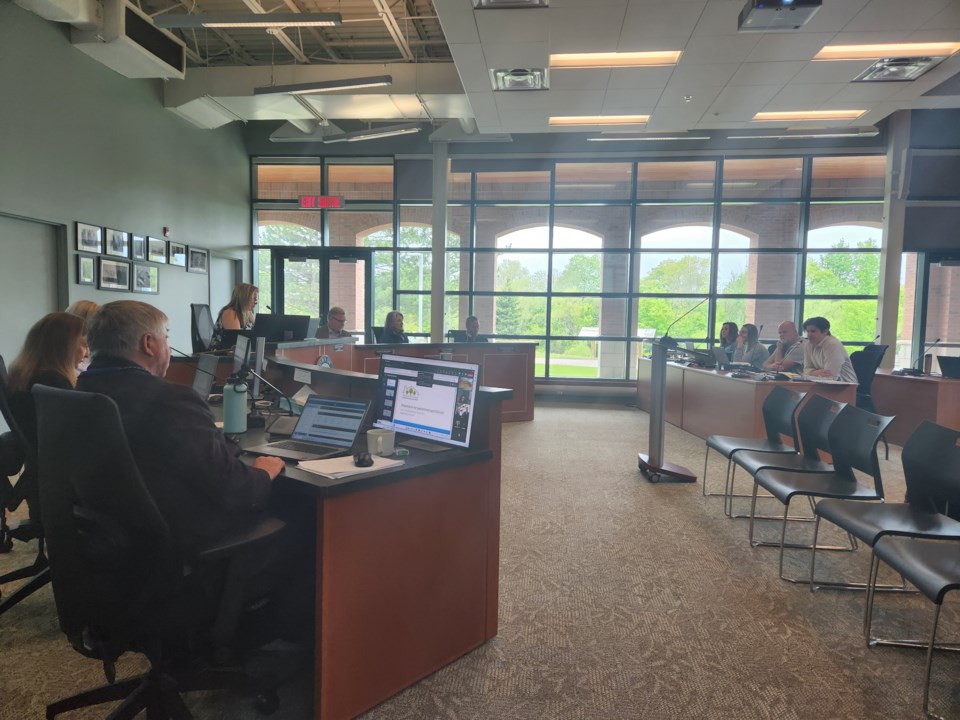The future of the Blue Mountains Attainable Housing Corporation remains up in the air.
On May 24, The Blue Mountains council held a lengthy special meeting with members of the corporation’s board of directors to discuss the future of the organization in the wake of the failure of the Gateway attainable housing project to attract a viable bidder and the subsequent resignation of the corporation’s executive director Jennifer Bisley.
The public portion of the meeting stretched to more than two hours and council then met in closed session with Bisley and members of the housing corporation’s board for approximately 90 minutes.
After the closed session ended, council announced it was directing staff to come back to council with a full report about the situation for consideration before the upcoming summer break in the council schedule.
The public portion of the meeting featured housing corporation board chair Gavin Leitch and director Andrew Siegwart making a presentation to council about the corporation’s history, its involvement in the proposed Gateway project, financial situation, achievements over the past several years and options for the future.
On an operational basis, the housing corporation is a separate and independent organization from the town. It has its own unique governance structure that gives the town a controlling interest in the corporation. It has seven at-large directors and two municipal directors (Mayor Andrea Matrosovs and Coun. Shawn McKinlay).
According to the financial figures in the presentation, the housing corporation spent just over $788,000 on its operations over the past several years. Most of its revenue - just over $740,000 - came in the form of an operating loan with the town. The town also spent just over $608,000 on the purchase of the Gateway site, which was the former Foodland property on Highway 26 just outside Thornbury. The total cost of the property was $1,748,492, with the town using $1,139,845 in funding from Grey County for the purchase in addition to its own money.
Progress on the Gateway project came to a halt earlier in the year when a single bid for a three-storey building at the site was received and deemed not viable. Rising interest costs, construction cost increases due to rising inflation and lack of upper-level government funding were cited as some of the causes of the failure of the process.
In addition, housing corporation representatives at the meeting said the decision to pursue a three-storey building at the site in an effort to alleviate public concerns about the height of the project made the proposal financially challenging from the outset. Originally, the project was envisioned as a five-storey building.
Both Leitch and Siegwart expressed regrets about the current situation and the ultimate failure of the Gateway request for proposal process.
“All of us here are not pleased with the outcome,” said Leitch. “In the end, there was no proposal. There are no shovels in the ground.”
Siegwart said the relationship between the housing corporation and the town changed when the corporation shifted into the mode of developing the project at the Gateway site. Once that happened, the housing corporation essentially became a developer seeking the town’s approval for a project. He said this led to a change in how communications between the corporation and town staff occurred.
“We lost some connective tissue there. We should have found a different way to structure that,” he said.
The board members presented a number of options to consider for the future of the corporation going forward. They included: the housing corporation continuing on with its current mandate, looking at changes to the governance structure and funding model, or winding down the corporation altogether.
Should the corporation continue operating, options for the future include: continuing to try and be the lead developer for attainable housing projects, moving into a role of a developer/manager of programs to advance and encourage attainable housing in the town, becoming more of a policy advisor to the town and whether or not to continue as a town-focused organization or become something larger and/or more regional.
On Gateway, the corporation suggested two options: adapting the project and attempting to advance or end it all together and moving on.
“All the options are on the table at this point. This needs to be decided. We need to determine a path forward,” said Leitch.
Councillors Paula Hope and Gail Ardiel said there was a perception in the public that the housing corporation was not transparent or accountable.
“If there was a key stakeholder that didn’t get taken care of, it was the public,” said Hope, who said steps needed to be taken to “rebuild the public confidence.”
Ardiel agreed.
“It seemed like a cloak of secrecy. We’ve lost the accountability of the public,” she said.
Leitch acknowledged that, as the Gateway project evolved and proceeded, the distance between the town and the housing corporation grew.
“It was never intended to be cloak and dagger, that certainly was never the case,” he said.
CAO Shawn Everitt noted that the relationship between the town and corporation was fundamentally altered.
“I honestly think we let the corporate veil get away from us,” he said. “There was too clear of a defined line.”
Over the course of the meeting, there was little discussion about what the future may hold for the housing corporation. Coun. Alex Maxwell expressed hope for the possibility of the corporation “re-inventing” itself to “act as a catalyst on funding” for attainable housing projects.
“We do need housing. There is probably a role for everybody here,” he said.



